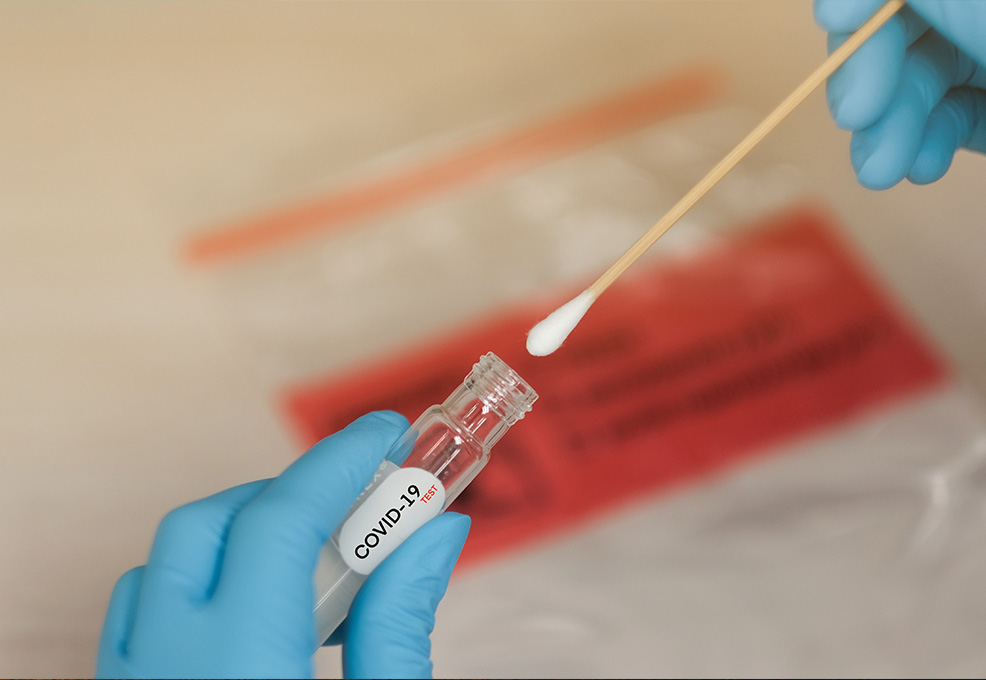The Treacherous COVID-19 Journey – Crisis and Turnaround

Author(s)
Jenn-Wen HuangBiography
Dr. Jenn-Wen Huang is a distinguished Professor of Plant Pathology, National Chung Hsing University, Taichung, Taiwan. He received his PhD in Plant Pathology at the University of Georgia, Athens, USA in 1990. He is an outstanding expert on soil-borne plant pathogens and biocontrol of plant diseases, and specializes in the development and implementation of bio-pesticides and bio-fertilizers for controlling plant diseases. Dr. Huang received the 14th and 15th National Innovation Award in 2017 and 2018, respectively, the Outstanding Academic-Industry Cooperation Award in 2020, and the Executive Yuan Award for Outstanding Science and Technology Contribution in 2020.
Academy/University/Organization
National Chung Hsing University-
TAGS
-
Share this article
You are free to share this article under the Attribution 4.0 International license
- LIFE SCIENCES
- Text & Image
- May 15,2021
The United Nations General Assembly announced 2020 as the International Year of Plant Health (IYPH). The goal was to raise global awareness of how protecting plant health can help with several public issues such as hunger, poverty, economic problems, and the environment. In recent years, many types of microorganisms beneficial to crops have been studied worldwide. Most of these microorganisms could promote crop growth; nevertheless, some of them could effectively control crop diseases. In Professor Huang’s Lab, several plant growth-promoting rhizobacteria (PGPR), including Bacillus mycoides (BM), have been isolated from crop root systems. The applications of BM could enhance seedling growth of various plants including tomato, lettuce, edible rape, cabbage and asparagus bean, and could induce resistance against pests and plant pathogens. These applications could produce safe and healthy agricultural products, and reduce the use of chemical pesticides and fertilizers. Application of the BM-derived products could potentially reduce the excessive use of chemical fertilizers and pesticides, could avoid environmental pollutions due to the use of heavy metals and pesticides, and could improve soil productivity. The ultimate goal of developing BM-related products is to preserve and protect agricultural ecosystems, to produce high-quality agricultural products with less environmental damage, and to increase food safety, thus achieving sustainable agriculture.

Morphology of Bacillus mycoides and its functions for enhancing plant growth and controlling crop diseases

Figure 1. Colony morphology of B. mycoides (BM) on nutrient agar and cells of BM under scanning electron microscope.
B. mycoides is a type of plant growth-promoting rhizobacteria (PGPR), which could proliferate and survive in soils, plant roots and tissues. In Dr. Huang’s Lab, exogenous application of these BM isolates has demonstrated their ability to enhance growth of various plants including tomato, lettuce, edible rape, cabbage and asparagus bean, and to induce resistance against pests and plant pathogens (Figure 2). The formulated BM products could promote the growth of cabbage, cucumber, asparagus bean, radish, lettuce, tomato and rice; and could even effectively control tomato Fusarium wilt, cucumber damping off, powdery mildew on tomato and cucumber, strawberry gray mold, cabbage club root, rice blast, scallion rust and strawberry mites.

Figure 2. A. B. mycoides used for the cultivation of vegetables to promote the growth of crop seedlings (Upper left to lower left: cabbage, asparagus bean, edible rape, lettuce and tomato; right two: BM the cultivation of vegetables with mycoides; left two: the cultivation of vegetables without mycoides ). B. B. mycoides could promote the growth of the strawberry root system. C. B. mycoides could enhance the growth of jewel orchid (Anoectochilus formosanus Hayata), an important medicinal herb in Taiwan. D. B. mycoides could control the Fusarium yellow on Phalaenopsis.
Dr. Huang’s research focuses not only on the efficacy of BM applications but also on discovering the mode of actions. To uncover the mechanisms of BM application on plant health, his research has demonstrated that the mechanisms underlying plant growth promotion and disease resistance are because of the following:
- BM could effectively colonize root systems and the inside of plants, and could induce plant defense reactions;
- BM could produce and secrete the plant growth hormone indole-acetic acid (IAA) to enhance the development of root systems;
- BM could release dimethyl disulfide (DMDS) and secrete biosurfactins that disrupt pathogens' cell membranes.
The isolates of BM have been developed into bio-pesticides and bio-fertilizers to cultivate healthy seedlings of various crops and control many diseases such as orchid Fusarium yellows, strawberry Fusarium wilt, tomato powdery mildew, cucumber damping off, rice diseases, etc. By uncovering the mode of actions of BM on crops, it will provide a clear picture for future development of bio-pesticides and bio-fertilizers.
The ultimate goal of developing BM-related products is to preserve and protect agricultural ecosystems, to produce high-quality agricultural products with less environmental damage, and to increase food safety. The BM-related products derived from Dr. Huang’s research will promote plant growth by providing the necessary nutrients, and induce plant resistance against a variety of pathogens. Application of the BM-derived products could reduce the excessive use of chemical fertilizers and pesticides, could avoid environmental pollution due to heavy metals and pesticides, and could improve soil productivity. Therefore, agricultural production can be sustained for many generations to come.
STAY CONNECTED. SUBSCRIBE TO OUR NEWSLETTER.
Add your information below to receive daily updates.




